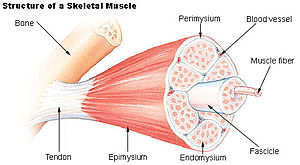Total system SRA (stimulus-recovery-adaptation) is the idea/concept of looking at the body’s stimulus-recovery-adaptation process through the influences of its individual parts (subsystems). The adaptation process, also know as the general adaptation syndrome (GAS), is simple, yet effective model for learning about fatigue and recovery. However, it’s simplicity has led to some bigger misunderstandings. Below graph is referred to as the SRA curve (stimulus-recovery-adaptation)

SRA Curve (5 stages)
Stage 1 stimulus (the workout/exercise/set/rep)
Stage 2 fatigue (caused by the magnitude of the stimulus)
Stage 3 recovery (returning to baseline from stimulus)
Stage 4 adaptation “supercompensation” (an extended portion of recovery where body’s ability goes above baseline)
Stage 5 Detraining (where adaptation is not sustained and reduces back to baseline)
Too Simple
The above SRA is not a bad model by any means. It is an extremely effective way of illustrating how a very, very complex system works. However, with simplicity can come lack of details. One of the issues with the SRA model is that it does not illustrate how all of the subsystems of the body are interacting with one another.
SRAModel and Subsystems
Subsystems
Muscle:
Muscle is probably the most commonly talked about and researched subsystem of the body. There have been numerous studies looking at length of recovery from a stimulus, different types of stimuli, and how these stimuli cause different types of fatigue and adaptation. Depending on the training level of the individual, the intensity and length of the workout, and what the workout consisted of, typically rest can be 1-2 days between muscles groups (1). Again, this depends on the type of training.

Nervous System:
The nervous system is much trickier to quantify. This is in large part due to the fact that the nervous system is broken up in to two different parts, central and peripheral. Central nervous system is your brain and spinal cord, while your peripheral is everything else. If you have peripheral fatigue (the neurons acting on the local muscles) you can have impaired performance. If you have central fatigue, you might lack the “drive” to send transmission via the peripheral system.
Central fatigue is a little more difficult to pinpoint. It can be related to “staleness”, lack of motivation, burnout and overtraining (3).
An example of central fatigue is the feeling you have after you take 3 final exams in a row. You are fried, mentally taxed and do not have much motivation. The peripheral neurons are not fatigued nor are they damaged, but it is possible that your performance in the weight room might be lacking due to the stress on the central nervous system.
Tendons/Ligaments:
Tendons and ligaments are a little different than muscle. Micro tears in these tissues do not repair as fast. Tendons will heal faster than ligaments due to their innate properties (blood flow). In fact, they don’t repair in the same ways. When sprained, ligaments do a poor job of healing. They essentially just scar over and stay stretched out. This is why once someone tears their ACL they become extremely likely to do it again (2).

Nutrition
Nutrition isn’t necessarily a subsystem, however it influences all other subsystems. If nutrition is lacking, all other subsystems can be affected. From hydration to caloric intake, lack of nutrition can hinder the underpinning mechanisms that make the subsystems “go”

Putting It Together (SRA)
Each subsystem has its own Stimulus-Recovery-Adaptation curve (SRA). Muscle will recover at a different rate than that of the nervous system or tendons and ligaments. Specific subsystem fatigue could theoretically influence what you are going to train. If there is high muscular damage, but the athlete’s nervous system is considered to be “fresh”, then maybe isometrics or short ranges of motion with no eccentrics might be your best bet. If your nervous system is fried, then using sub-maximal loads for sub-maximal repetitions might be a way to give it a break while still stimulating the muscular system.
The summation of all of these systems gives you a perspective as to how the system is responding as a whole. In order to get the most out of your training, one needs to understand how to facilitate recovery of fatigued subsystems and stimulate those subsystems that are ready to go. A one graph model will not do the complexity of the human body justice. Instead, each subsystem has its own respective SRA curve and the coach should be aware as to how each subsystem is responding.
Citations
(1) https://www.unm.edu/~lkravitz/Article%20folder/recoveryUNM.html
(2) https://www.ncbi.nlm.nih.gov/pmc/articles/PMC4205204/
(3) Siff, M.C. (2000). Supertraining. Denver: Supertraining Institute
(4) Hans Selye–> First to conceptualize the idea of GAS
Images:
- http://www.irbsandc.com/module=5§ion=25&subsection=66&languagEN
- https://www.google.com/url?sa=i&rct=j&q=&esrc=s&source=images&cd=&ved=0ahUKEwjE36iokZDTAhVLxYMKHXFBAU8QjxwIAw&url=https%3A%2F%2Fen.wikibooks.org%2Fwiki%2FHuman_Physiology%2FThe_Muscular_System&psig=AFQjCNHNMNCgruXOgNbQ18BmRX6CHGdrJQ&ust=1491578563224247
- https://img.purch.com/rc/300×200/aHR0cDovL3d3dy5saXZlc2NpZW5jZS5jb20vaW1hZ2VzL2kvMDAwLzAyNC8yOTIvb3JpZ2luYWwvbmV1cm9ucy0xMjAyMDguanBn
- https://medlineplus.gov/ency/images/ency/fullsize/19089.jpg
- http://www.ndmcolumns.com/wp-content/uploads/2017/03/Sports-Nutrition-Market.jpg

